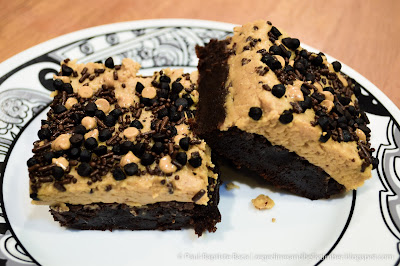Oatmeal is simple. Sometimes too simple to give it much notice.
However simple, there is a lot to like about oatmeal. There's the beta-glucan. And the complex carbohydrates and water-soluble fibre. Loads of B vitamins. Our very own FDA has said it is A-Okay for companies selling oatmeal to claim that it may reduce the risk of heart disease when combined with a low-fat diet. Loaded with more calories than most other types of porridge, oatmeal also encourages slow digestion and stabilizes blood-glucose levels.
And it tastes pretty darn good.
Samuel Johnson was no fan. In his dictionary definition for oats he wrote: "A grain, which in England is generally given to horses, but in Scotland supports the people."
In response, Lord Elibank retorted, "Yes, and where else will you see such horses and such men?"
The simple, underrated, and oft-unappreciated oatmeal can be a bit more gourmet with just a scant bit of effort. It's easy, with just a little nudge, to give it a bit more je ne sais quoi.
And why not?
If you are going to make oatmeal you might as well go fancy. And so here, for your enjoyment and epicurean enlightenment, is the deceptively easy Oatmeal Brûlée. No blowtorch required.
(If you feel so inclined and want to impress, you can certainly call this Flocons D'avoine Brûlée. But keep in mind that's just fancy-speak for Burnt Oat Flakes. Sometimes less is more.)
Oatmeal Brûlée
1½ Cups water
1½ Cups water
1 Cup milk
1½ Cup oatmeal (either Old Fashioned or quick cooking)
1½ Cup oatmeal (either Old Fashioned or quick cooking)
1 large egg
3 Tbs brown sugar
1/2 Cup heavy cream
Fruit for topping (strawberries, raspberries, blueberries)
Powdered sugar for dusting
Top off each ramekin with the prepared egg mixture.
Bake in preheated oven for 10 minutes. Sprinkle the top of each dish with powdered sugar. Continue to bake for 15 minutes more or until liquid is set and the top is slightly browned.
3 Tbs brown sugar
1/2 Cup heavy cream
Fruit for topping (strawberries, raspberries, blueberries)
Powdered sugar for dusting
Preheat oven to 350º F. Generously butter four small ramekins.
In a medium sauce pan, bring the water and milk and one tablespoon of the brown sugar to boil. Add the oatmeal and reduce heat to a simmer. Cook oatmeal for approximately five minutes until desired texture is reached.
While the oatmeal is cooking, mix the egg with the remaining two tablespoons of brown sugar and the cream. Beat well with a whisk.
When the oatmeal is cooked, spoon equal amounts into each of the prepared dishes, leaving enough room to add the egg mixture on top of each.
In a medium sauce pan, bring the water and milk and one tablespoon of the brown sugar to boil. Add the oatmeal and reduce heat to a simmer. Cook oatmeal for approximately five minutes until desired texture is reached.
While the oatmeal is cooking, mix the egg with the remaining two tablespoons of brown sugar and the cream. Beat well with a whisk.
When the oatmeal is cooked, spoon equal amounts into each of the prepared dishes, leaving enough room to add the egg mixture on top of each.
Top off each ramekin with the prepared egg mixture.
Bake in preheated oven for 10 minutes. Sprinkle the top of each dish with powdered sugar. Continue to bake for 15 minutes more or until liquid is set and the top is slightly browned.
Garnish with fruit of your choice and dust with more powdered sugar.
Serve warm.





















